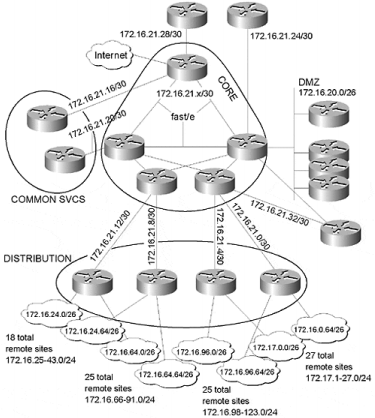CCIE Network Design FAQ: IS-IS Network Design
1: What protocol was IS-IS originally designed to provide routing information for?
2: Where can summarization take place in IS-IS?
3: How many levels of routing are there in an IS-IS network?
4: How many pseudonodes are allowed in an IS-IS area?
5: Is it possible to overflow the LSP database on a router? What are the indications this is occurring?
6: What is the range of internal metrics in IS-IS? Are they external? Why is this a problem in a large-scale network?
7: Why isn’t it good to have a dial backup dial into a router behind a summarization point for the networks behind the dial backup router?
8: Will routers in different areas form L1 neighbor adjacencies?
9: Should you just let all the routers in your network run both L1 and L2 routing?
10: Will IS-IS automatically repair a partitioned L2 routing domain?
11: Will routers running integrated IS-IS, which are in the same area but different IP subnets, form an adjacency? What could you look at, and what would you see to determine this is happening?
Answer: No. When you look at a router’s CLNS neighbors, you would see the following:
A#show clns neighbor
System Id Interface SNPA State Holdtime
Type Protocol
00C0.1465.A460 Se0 *HDLC* Up 297 IS
ES-IS
Note that the protocol is ES-IS rather than IS-IS; you would expect an IS-IS adjacency between these two neighbors. Because they are ES-IS neighbors, they will not exchange routing tables.
12: Must all L2 routers form one contiguous group of routers?
13: How often does IS-IS flood link-state packets? Is this adjustable?
14: How do you advertise a default route in IS-IS?
15: How do you configure a router so that a default route is advertised only under some conditions?
16: What is the effect of an LSP that is corrupted at the data link layer, but the error correction codes are correct?
More Resources
